Influence of Internet and Social Media and Increasing Awareness of Syriac Language and Traditions In Kerala
This paper was presented at the 16th Symposium Syriacum on 19 August 2016, at the International College of St. Lorenzo of Brindisi, Rome.
Summary
Syro-Malabar Church belongs to the East Syriac family of Syrian churches due to its founder Saint Thomas the Apostle and continued relationship with Church of the East. Since the so-called Synod of Diamper, the Church deviated from its roots. A decision to translate the liturgy into local vernacular in 1962 resulted in wiping off the last traces of Syriac language in the Church. Until about 10 years ago, the language was not even used in seminaries. Without having any attempt from Church’s hierarchy, a widespread usage of Syriac language in the liturgy can be seen these days, although it lacks uniformity. In addition a significant number of laymen show interest and passion to learn the language. This paper attempts to provide an insight into correlation between aforementioned change and activities in social media related to Syriac language. A survey conducted among the members of the Syro-Malabar Church is used for the analysis. In addition current status of awareness on the Syriac language and Syriac traditions is discussed with the help of the result from a survey and a discussion took place in Social Media in 2007.
1. A concise history of Mar Thoma Nasranis
According to the tradition of Mar Thoma Nasranis, Saint Thomas the Apostle, landed in Kodungallur (North West of Kochi, India) in 50 AD [Koonammakkal, 2012a]. It could be that he travelled to the Malabar Coast by a ship of Roman traders as there was active trade between the Gulf Peninsula and the Malabar Coast according to a number of authors (as an example see [Tomber, 2008]). As per Ramban songs, Saint Thomas the Apostle established seven Churches in Kerala – Kodungallur, Kollam, Niranam, Nilackal (Chayal), Kokkamangalam, Kottakkayal (Paravoor) and Palayoor. Their folksongs also describe the martyrdom of Saint Thomas at Chinnamala near Chennai in Tamil Nadu in 72 AD. The events described in the folksongs are in line with the Acts of Thomas [Vadakkekkara, 2007], written during the classical era of Syriac, before the third century. Striking similarity of their folksongs and the text of the Acts indicate the antiquity of the tradition on the Malabar Coast.
Until the aftermath of Coonan Cross oath in 1653 AD, the Nasranis were united under a community head called Arkadiyakkon (Archdeacon or Jaathikku Karthavyan) – “the head of the caste,” bearing the title “Archdeacon and Gate of All India”. The Archdeacon held all characteristics of a King or a modern secular leader. He was normally escorted by a group of Nasrani soldiers. Spiritual guidance was given by the Catholicos-Patriarch of Seleucia-Ctesiphon – the Church of the East (CoE) by sending Bishops. Though there were occasions when more than one bishop from CoE were present in Malabar at the same time, there was only one Arkadiyakkon who made decisions related to temporal matters of the Church. Bishops from CoE had the role to give spiritual guidance and they never intervened in the financial and communal matters of Nasranis. Thus the Church in Malabar was united under the leadership of the Arkadiyakkon.
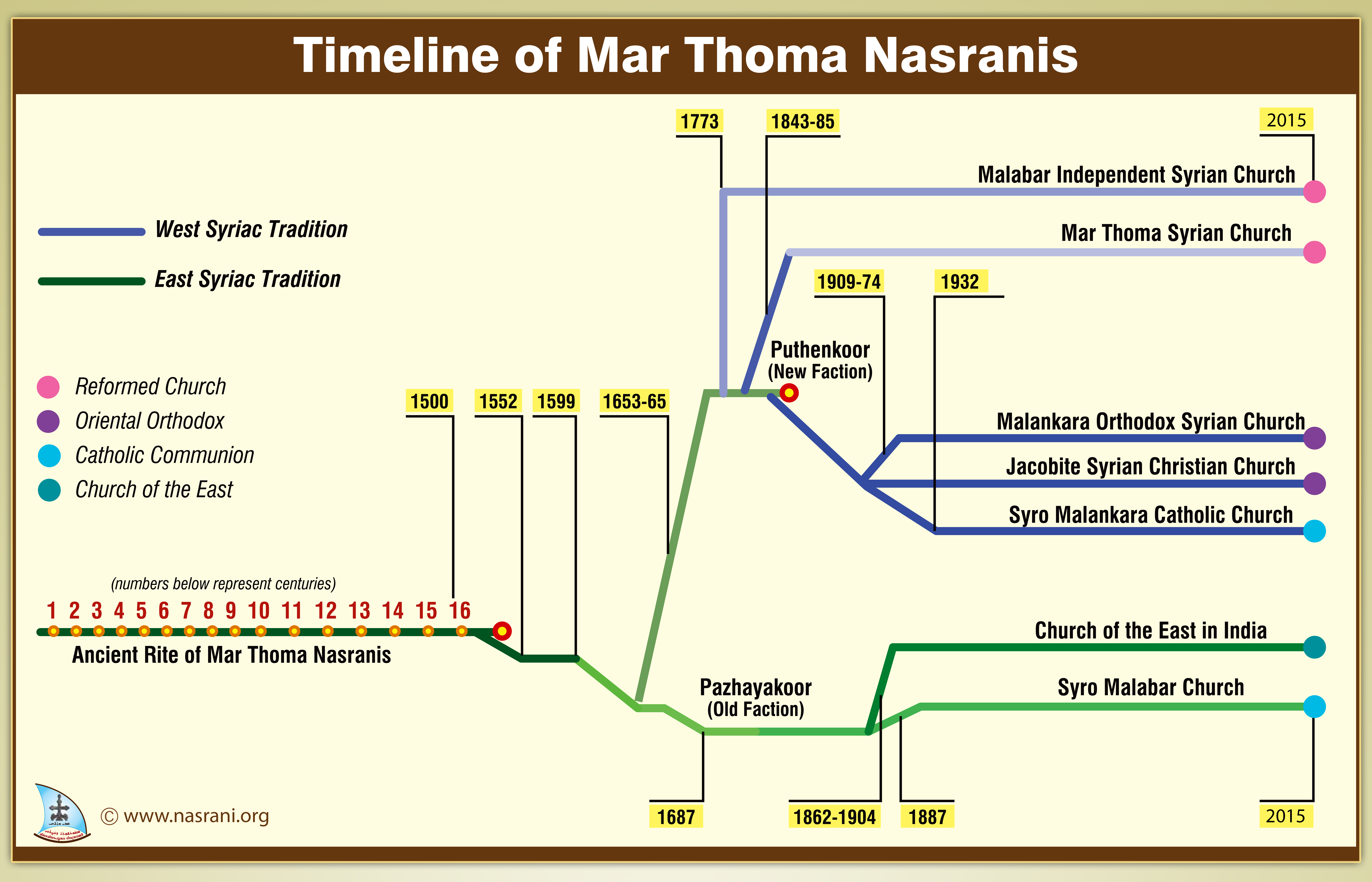 Figure 1: Historical Divisions among Nasranis of India (Courtesy: Nasrani Foundation)
Figure 1: Historical Divisions among Nasranis of India (Courtesy: Nasrani Foundation)
When traders from Portugal came from 1498 AD onwards, there were also Roman Catholic missionaries accompanying them. Relation between Mar Thoma Nasranis and Portuguese in the early years (until AD 1550s) of their visits were friendly since the Portuguese had to depend on Nasranis for reasons of trade and military help. Gradually the power and influence of Portugal increased in India and they demanded power on the churches of Mar Thoma Nasranis, thinking that they could gain control on the spice trade. Portuguese managed to get support of the Hindu King of Kochi as well, a Kingdom that had supported the Nasranis for long time. As a result, the Portuguese missionaries convened a meeting in 1599 AD, which they call “Udayamperoor Sunhados” (Synod of Diamper), an invalid Synod according to Thaliath [1958]. The so-called Synod declared the authority of the Portuguese Padroado over the Church of Saint Thomas Christians and appointed a Jesuit Bishop of Portuguese origin to govern the Malabar Church. Thus the Portuguese colonised the Church of Malabar that has apostolic origin. Fifty years after the illegitimate meeting, through the Sleeva Sathyam (Coonan Cross oath), the Nasranis sought to assert the lost freedom of their successors. They pledged that they would never accept the authority of any Jesuit or Portuguese bishop[1]. A number of historians hold the view that Sleeva Sathyam might be the very first organised activity against European colonialism in India. However, the events after the oath were not positive; Nasranis split into two factions and in the later centuries into many more denominations. At present they are mainly divided into seven denominations. A pictorial representation of these divisions is given in Figure 1.
2. Syriac Language in Kerala
Saint Thomas was an Aramaic speaker and a Jew. According to Katz & Goldberg [1993], permanent settlements were formed in the Malabar Coast as a result of the ancient trade links. Therefore it is reasonable to think that it was the Jewish colonies that existed in the India from the times of King Solomon that paved the way for Saint Thomas to Kerala [Puthiyakunnel, 1973][Koonammakkal, 2012b]. Early adherents who accepted the message of Saint Thomas were immigrant communities that involved in trade. The lingua franca of trade at the time was Aramaic [Koonammakkal, 2012b]. Malpan Thomas Koonammakkal describes in detail how Aramaic became the language of Nasranis. A summary is given below, see [Koonammakkal, 2012b] for details.
It was the mission of Apostles to spread the message of Messiah to scattered Jews living in different parts of the world. The first mission of the Apostle Thomas was in Persian Empire, including North West India, where he found many Aramaic speaking Jewish communities that involved in trade along silk route. His second mission was in West and East Coasts of present-day South India. The seven Christian communities mentioned in Ramban songs were near the vicinity of Jewish settlements of Malabar Coast. Destruction of Jerusalem temple in AD 70 enabled some Jews to come and settle in Malabar. Yet another series of Jewish emigration to South India happened during the Bar Cochba war (AD 132-35). Gradually some of these later immigrants also assimilated into the community of Aramic-speaking Christians established by St Thomas. In the meantime, their language Aramaic evolved into Christian Aramaic or Syriac through continued interaction with trading communities, who spoke Aramaic.
According to [Mingana, 1926], an eminent scholar of Syriac manuscripts, Syriac Christianity should have gained a strong presence in Malabar Coast by the end of 3rd century at the most. A number of Syriac and Greek manuscripts indicate the presence of Christians in Malabar Coast and their relation with Persian Christianity from 3rd century onward. By the end of third century onwards or even earlier, large groups of Christians from Persia and perhaps other Middle Eastern Kingdoms started migrating to Malabar Coast due to persecutions, political or economical reasons. Thus relationship with the Persian Church and Christian immigrants from Persia enabled the Saint Thomas Christians to keep their language alive until 1960s.
Similar to Arabic Karsoni, Saint Thomas Christians derived a writing system known as Karusoni or Karsoni Malayalam using Syriac scripts to write Malayalam. As described above, the Saint Thomas Christian community we currently see is the result of early inhabitants and later migrant Christians from Persia. Karsoni Malayalam might have been developed to ease the integration of migrants. The system was in wide use until the middle of 19th century, when local Malayalam script named kairali lipi became a standard. However Syriac was continued in the liturgy and prayers.
Influence of Syriac in language is clearly visible among Saint Thomas Christians from the words they use in Malayalam. Few examples are given below in Table 1.
Table 1: Selected Words of Syriac origin in Malayalam
In 1962, Church of Rome decided to translate their liturgy from Latin to local vernacular. The so-called sui-ruis Churches also followed the decision. As a result the Syro Malabar Church’s liturgy has been translated into Malayalam. It was the beginning of an era without Syriac. The Church failed to retain the age-old Syriac words that were part of even Malayalam language in the translated liturgical texts. Instead they have taken words from English and made literal translations. Few examples are given in Table 2:
Table 2: Examples of English to Malayalam Translations used in the liturgical text of Syro Malabar Church
| Original Syriac Word | Replaced Malayalam Word | English Root Word |
| Mamodisa | Njanasnanam | Baptism |
| Ruha D’Kudsha | Parishudhaathmaw | Holy Ghost |
| Bawa | Pithaw | Father |
| Alaha | Daivam | God |
| Niwia | Pravachakan | Prophet |
Seminaries gradually stopped teaching Syriac language from the curriculum. There were many schools and pre-university colleges owned by the Church teaching Syriac as a second language. By late 1980s the institutions with few exceptions have removed Syriac from the curriculum. Until then the Bible used by Syro Malabar Church members was the Peshitta version translated by Mani Kathanar CMI. His translation was faithful to the source and did contain many Syriac words. By late 1980s, a new Malayalam Bible was introduced by Pastoral Orientation Centre (POC). Source used by POC was not Peshitta but Greek and Latin. Translators of POC Bible also did not care to preserve words from Syriac. It was not just the language that disappeared from the community, but also many cultural and liturgical practices like fasting, divine praises, folk songs of festive seasons, naming conventions etc. that were part of the regular life of Nasranis. One should not forget that many Syriac Grammar books were published until 1950s, indicating the importance of the language at least among the clergy. Aramaic Grammar by Thomas Arayathinal is an example [Arayathinal, 1957].
It has to be noted here that the Churches belonging to Puthenkoor faction also translated their text into Malayalam. However, they did not translate the complete liturgy into Malayalam. Some prayers continued to stay in Syriac. Texts were printed in Syriac as well. Priests continued reciting many prayers in Syriac. The curriculum in the seminaries continued the Syriac lessons. The prayer textbooks were printed with prayers in Syriac script and transliterated Malayalam.
3. Recent Changes
It might have appeared at least to some in 1990s that it was the end of Syriac language in Kerala. However, a number of activities initiated by laity and clergy enabled to bring back the language to the liturgy at least to a certain extent. The following paragraphs discuss some important actions.
3.1 Qambel Maran – Audio CD – 2001
Qambel Maran CD is the first record released after a gap of 15 years perhaps. Fr. Alexander Kattakkayam released the last record in 1988. Fr. Joseph Palackal CMI lead recording of chants in 1998 at Saint Joseph’s Church Mannanam [Antony, 2008]. The CD got attention in the universities of USA and Europe. The chants were sung in the archaic forms by old priests of the time including Fr. Abel Periyappuram CMI. It was not available in the stores of Kerala. Therefore popularity of this CD was limited in Kerala.
3.2 Raza Qubana – Double Album – 2006
The Eparchy of Palai initiated the project. Late Fr. George Plathottam who learnt Syriac in 1950s from old priests of his time has taken responsibility of the project. He recruited a young band and started practicing the songs every weekend for almost a year as he recollects [personal communication 2014 September]. Work included the transfer of pronunciation and preparation of transliterated text, as the band members did not know Syriac scripts. The tunes of the chants were the ones used in the Church back in 1950s, which attracted older generation as well. The CD pack was sold for 150 Indian Rupees (around 3 USD). In 2010, Fr. Plathottam has published parts of the album in the website of Nasrani Foundation[2]. This extended the popularity of the chants and tunes among Diaspora and Internet users. After the CD pack was released, Fr. Plathottam and the music band started celebrating Syriac Raza in parishes for annual feasts and special occasions. This encouraged other senior priests like Narivelil Mathayi Kathanar, Fr. Mathew Mattom, and Fr. Jose P. Kottaram to celebrate Raza in Syriac. There are at least three music bands capable of delivering Syriac in the region of Kottayam, Changanasseri, Kanjirappalli etc. Also it became a standard practice to celebrate a Syriac Raza annually in parishes.
3.3 Discussions in Social Media Platform
Social media played huge role in getting popularity for Syriac language, liturgy and chants in the recent times. Renowned priests like Fr. Thomas Koonammakkal and Fr. Varghese Pathikulangara report that number of enquiries related to Syriac has increased significantly in the recent years. They also add that the enquirers were youngsters and they heard about Syriac over Internet. Their observations can probably go in parallel with the emergence of activities related to Syriac in Social Media.
3.3.1 Orkut.com – 2006-11
From 2006 onward many communities related to Saint Thomas Christianity have been established. The author was a member of many of these communities. In the early days, the topics of discussions were purely basic topics and some political topics. However, at a later stage, topics related to history, traditions and Syriac language became popular. There was even a discussion titled “Save Syriac”, in which the following points (with some edits relevant for this paper) were proposed to “save” Syriac in 2007.
- Make Syriac as an optional second language in those schools run by the Syrian Christian managements.
- Introduce Elementary education of Syriac language in Sunday schools.
- Introduce lecturer/teaching posts in colleges and schools, and then people will simply start learning it on the hope of getting a job.
- Celebrate at least one Qurbana in Syriac on Sundays.
In 2014, Google stopped Orkut.com, but the communities migrated to Facebook from 2011 onwards.
3.3.2 Facebook.com – 2012-present
From 2011, onwards, Facebook.com received more popularity among youngsters primarily due to the promotions that Facebook offered in association with mobile phone service providers. Gradually Orkut.com discussions went down although the features and user experience of “Orkut Communities” were far superior to that of the Facebook equivalent “Facebook Groups”. At present there is more than 10 Facebook groups with members more than 8000. With emergence parallel WhatsApp groups for topics related to Church, the discussions in Facebook have reduced in the past few years.
3.4 Emergence of Websites – 2007-present
Inspired by the discussions from Orkut communities, a number websites were launched by laymen. Of these two major websites, which still exist, are discussed below.
3.4.1 NSC Network – www.nasrani.net
Nasrani Syrian Christian – NSC – Network was launched in November 2006. NSC Network showcased a large number of articles on the history, culture and heritage of Mar Thoma Nasranis and provided a large Internet forum for discussions and learning. Professionals working in the Diaspora mainly wrote articles. Followed by the release of each articles there were deep discussions involving the interested people and members of academia as well. The website had more than 30,000 monthly unique hits during 2011-12.
3.4.2 Nasrani Foundation – www.nasrani.org
NSC Network focussed on high-level discussions and did in-depth research on Nasrani history, heritage and culture. However basic topics needed more reach among naïve readers and youngsters. Written content published in the website were focusing to provide basics of history, traditions and culture of Saint Thomas Christians.
It was identified that there is hardly any websites that gives applications related to East Syriac liturgy. To this end, as a first step a dynamic online liturgical calendar[3] was launched in 2009 via the official website www.nasranifoundation.org to promote the East Syrian liturgy and a spiritual life centred on the Liturgical seasons. The effort was supported by a number of authentic scholars of the clergy, providing articles and homilies for the calendar. The calendar became a handy tool for those who want to organise their life according to the liturgical seasons of the Church. Printed copies of the Liturgical calendar and a large number of East Syriac resources are distributed through the website. An online bookstore also was launched that sold books related to liturgy, history and traditions.
During 2009-2012, the team worked on a very challenging project to develop an innovative online application of Liturgy of hours – the Divine Praises[4] of Syro Malabar Church. As part of this, the team recorded more than 500 songs. The application displays prayer text (official text of the Syro Malabar Church) and a playlist of songs that corresponds to the applicable liturgical day and major prayers- the Ramsha, the Sapra and the Lelya based on user’s local time detected from the computer automatically. The application is very unique and is perhaps the first ever attempt to convert the liturgy of hours into a computer application. The application is used by a large number of faithful and clergy regularly on the computer, tablets and mobile phones. Since July 2015, the web-based prayer application is available in mobile platform[5] (Nasrani Divine Praises) as well with enhanced features such as compass, prayers in Syriac, its transliterations etc.
In 2014, a YouTube channel was launched and a number of video contents are promoted over the channel. Chants like Laku Mara[6] and Kandisha Alaha[7] are provided in YouTube with original Syriac text, Transliterations in kairali lipi (Malayalam) and Latin script and translations in Malayalam and English.
In 2013, to make the community more structured and streamline the efforts, Nasrani Foundation has been registered as a religious & charitable society under the Travancore-Cochin Literary Scientific and Charitable Society Registration Act (Act XII of 1955).
3.5 Mobile Applications
A number of mobile apps related to Saint Thomas Christianity are available in the app stores. Apps launched by Praarthana.org and Jesus Youth has received wide popularity among the faithful but none of them attempts to provide prayers in Syriac. Nasrani Divine Praises5 provides parts of the prayers in Syriac. Some snapshots are given in Figure 2 and Figure 3. The app presents relevant pre recorded songs in traditional tunes, so that users can familiarise with the tunes[8]. A number of mobile apps are provided by the Assyrian and Chaldean communities are not discussed here as they are not relevant for Saint Thomas Christians as they are too far away from using Syriac prayers in their daily life.
Figure 2: Transliterated text of Awoon D’Wasmaya in rendered in Nasrani Divine Praises App.
Figure 3: Syriac text of Awoon D’Wasmaya in rendered in Nasrani Divine Praises App.
3.6 Aramaic Project
There is a project named “Aramaic Project”, initiated by the Christian Musicological Society of India[9]. They produced documentaries based on the life and experience of senior scholars on Syriac and documented their life and experience through interviews. There are about 50 Episodes of documentaries are available in the YouTube channel[10] of the society.
3.7 WhatsApp Syriac Learning Platform
There is a change in the usage of mobile phone among the consumers after Smartphones became popular. Chatting applications like WhatsApp and Telegram became very popular and the features available in Social Media platforms were also reflected in the mobile world. Many WhatsApp groups related to Saint Thomas Christianity were formed in 2014 onwards. They focused, like their Facebook equivalents, on politics and current affairs of the Church. However few of them were exceptions. The very first WhatsApp group was formed in July 2015 to use as a platform for those who are interested to learn Syriac. The group has 75 members at the time of writing this paper. In addition to lessons in Syriac, topics related to Syriac language, liturgy and culture are discussed sometimes. Some members who have direct access to senior priests offer lessons in the forum voluntarily. Few snapshots are provided in Figure 4 and Figure 5. Members have opportunity to ask questions and get answers from experts.
Nasrani Foundation conducts Syriac language courses using WhatsApp groups since 2015. It has about 20 to 30 participants enrolled every year. Content of the course include writing system, reading rules, important vocabulary, basic sentence creation and simple prayers.
4. Results of Survey
In order to get some insight into influence of Internet and Social Media on the increasing awareness of Syriac language and related topics, an online survey[11] was conducted. Participants were members of Facebook and WhatsApp group. Majority of the participants were from Syro Malabar Church. 75% of the participants were between 18 and 40. 93% of the participants were males living in Kerala and Diaspora. 90% of the participants reported that they belong to a Social Media group related to their Church whereas 77% reported that they are also members of WhatsApp groups. Selected questions and corresponding responses are provided in the following figures.
5. Discussion
Survey provided a brief introduction to the status of awareness of Syriac language in Internet, Social Media and Mobile Platforms. It did not provide any insight into the population that does not use Social Media. Therefore survey has to be repeated among those who do not use Social Media and those users who use Social Media but not members of any Church-related groups. Therefore it is planned in future to conduct the survey among group who do not belong to aforementioned user group. However, it can be clearly said that at a significant percentage (38%) of the users learnt more about Syriac language and culture through Social Media.
A review of proposal made in 2007 in an Orkut forum for “saving” Syriac is given below.
| Proposal in 2007 | Status in 2016 |
| Make Syriac as an optional second language in those schools run by the Syrian Christian managements. | At least in some schools, there is Syriac is back in the curriculum.
|
| Introduce Elementary education of Syriac language in Sunday schools | Few dioceses have introduced this already. |
| Introduce lecturer/teaching posts in colleges and schools, and then people will simply start learning it on the hope of getting a job. | At least in some schools, there is Syriac is back in the curriculum.
|
| Celebrate at least one Qurbana in Syriac on Sundays. | There are few Syriac Qurbana celebrated in a significant number of parishes annually. Especially in eparchies of Changanasseri, Kottayam, Kanjirappalli and Palai it became a standard to celebrate Syriac Qurbana for annual feasts and special occasions. |
However to pass the language to next generations, these actions are not enough. Considering fact that the 30% population lives in Diaspora, Social Media can play a big role in keeping the language and basic culture active in the respective geographical locations.
6. Summary & Conclusions
A brief analysis of activities related to Saint Thomas Christians in Internet and Social Media was given in this paper. Results of a survey that collected information about the influence of Social Media on growing awareness on the identity of the Church and Syriac language has been presented. 90% of the participants reported that discussions in social media groups helped them to understand more about their Church. It appears that social media has some influence in developing interest in Syriac language among youngsters. However more efforts are needed in order to keep the language alive.
7. References
- Plathottam (2010) personal communication with the author, September 2010.
- Mingana (1926), “The Early Spread of Christianity in India”, University Press in Manchester, 1926.
- Koonammakkal (2012a) “Judeo-Christian and Patristic roots of St. Thomas Christians”, in Mar Thoma Margam, Ed. A Mekkattukunnel, Vadavathoor 2012, pp. 71-72.
- Koonammakkal (2012b), “Elements of Syro-Malabar History”, Beth Aprem Nazrani Dayra, July 2012.
- Puthiakunnel (1973) “Jewish colonies of India paved the way for St. Thomas”, The Saint Thomas Christian Encyclopedia of India, ed. George.
- Tomber (2008) “Indo-Roman Trade: From Pots to Pepper”, Duckworth 2008.
- Vadakkekara (2007), “Origin of Christianity in India: A Historiographical Critique”, Media House Delhi, 2007.
- Thaliath (1958) “The Synod of Diamper”, Pont. Institutum Orientalium Studiorum, 1958.
- Katz, E. S. Goldberg (1993) “The last Jews of Cochin: Jewish identity in Hindu India”, University of South Carolina Press, 1993.
- Arayathinal (1957), “Aramaic Grammar”, vol 1 and vol 2 St. Joseph Press, Mannanam, 1957.
- T. Antony (2008) “Qambel Maran – Syriac chants from South India- a review and liturgical music tradition of Syriac Christians revisited” October, 2008 Accessed on 16 March 2017, https://www.nasrani.net/2008/10/31/qambel-maran-syriac-chants-from-south-india/
Acknowledgements
The author would like to thank Malpan Thomas Koonammakkal and Mr. Joju Jacob for their valuable comments and suggestions for improving this article. In addition, the author would like to thank the members of Nasrani Foundation, Mar Thoma Nasrani WhatsApp group and few Facebook groups for participating in the surveys.
[1] This is a topic of debate as factions of Nasranis create their own versions of history for justifying their current allies or obedience with the external Churches. Writers from Syro-Malabar Church claim that it was against the Jesuits only and portray that their Church was always in communion with the Church of Rome through the Church of the East. Writers of the Churches derived from Puthenkoor faction (new allies) argues that the oath was against the Church Rome and thus the Roman Pontiff. This topic is beyond the scope of this paper and the author leaves it for the discretion of the reader.
[2] www.nasranifoundation.org/qurbana
[3] http://www.nasranifoundation.org/calendar/
[4] http://www.nasranifoundation.org/liturgyofhours/DivinePraisesApp/dpapp.asp
[5] https://play.google.com/store/apps/details?id=com.nf.app.nasrani&hl=en
[6] https://www.youtube.com/watch?v=xyYs3dDoOIw
[7] https://www.youtube.com/watch?v=bJ0ri1IULOM
[8] One may wonder why songs need to be provided in pre-recorded form. Since the faithful are highly addicted to Rosary and Novenas prayers, the divine praises prayers were not in use in any eparchies. Due to organised and unorganised Latinisation happened in the past centuries, esp. after 1962, the traditional tunes of Syro Malabar has been vanished gradually from many eparchies. The team identified this problem and decided to provide pre-recorded chants with orchestration.
[9] www. thecmsindia.org
[10] www.youtube.com/thecmsindia
[11] https://docs.google.com/forms/d/e/1FAIpQLSd8rH3lZbdH7iL8ojWUv-YuC5A_G9-sszwLcpK-v-dXzLnqug/viewform?c=0&w=1&usp=send_form



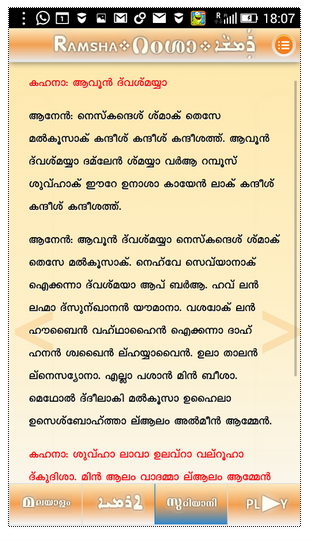


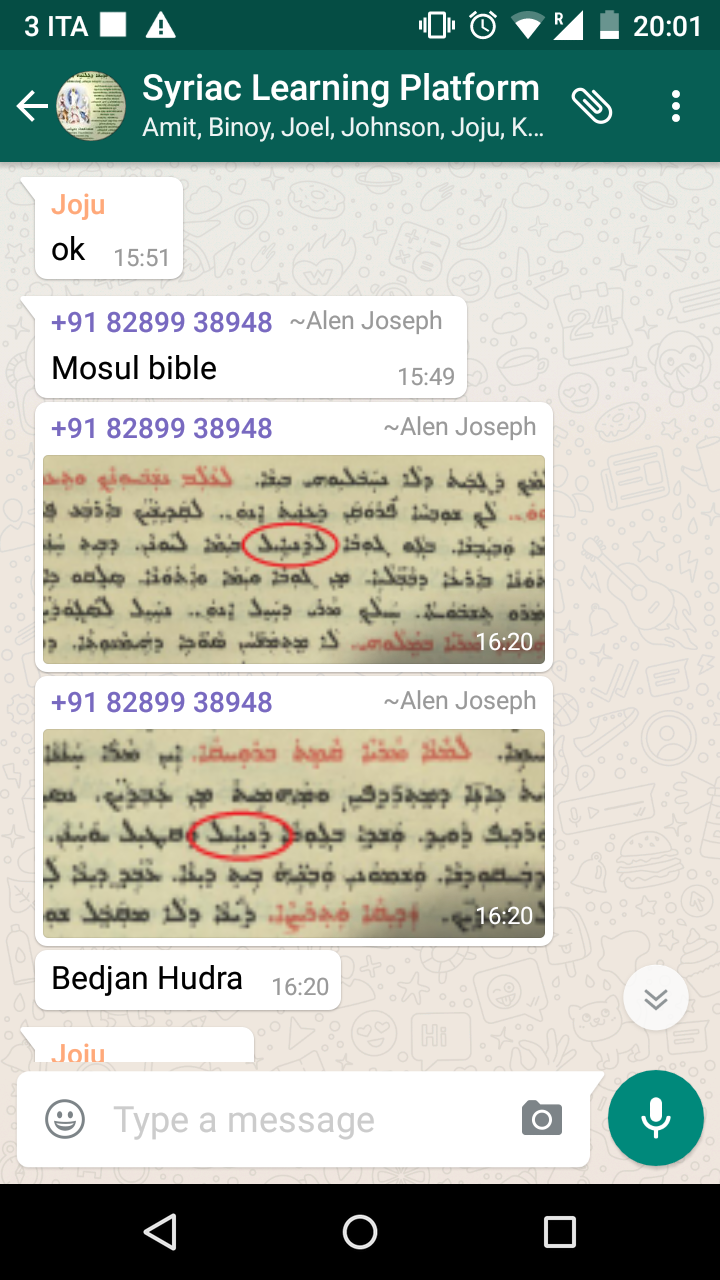


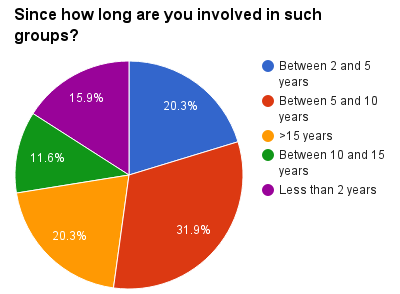
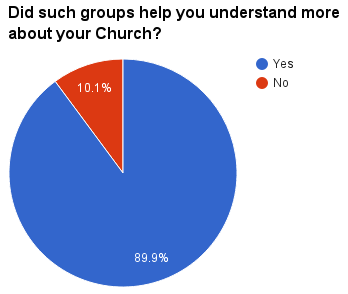
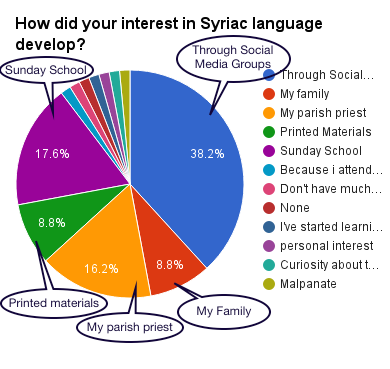
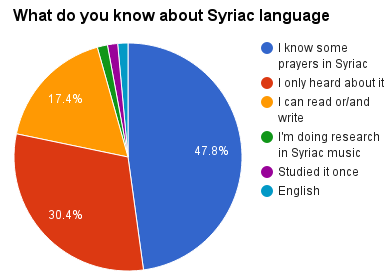
You first save your Latin, we Orthodox/Jacobite/Marthomites are here to save Syriac. People under the pope saving Syriac lol..
Jesus Christ instituted only one church- the One Holy Catholic apostolic church. On the rock of Peter.
That is the beginning. Church of the East was a schism from the One Holy Catholic Church when Nestorius was condemned for his heresy. So Nasranis were part of the one Holy Catholic apostolic church till the Nestorian heresy started spreading in the Syriac speaking communities, especially using the Liturgy of Mar Addai and Mar Mari.
There was no church of the East or church of the West etc when our Lord founded the church- His only bride . All of these divisions happened when people decided they wanted to do it their own way. Church is one. And She is built on Peter. She is the house built on the rock. The Body of Christ.
The Church of the East, which was part of the Great Church, shared communion with those in the Roman Empire until the Council of Ephesus condemned Nestorius in 431.
That is only one way of thinking. The condemnation of Nestorius is an old story now. The Council of Ephesus of AD 431 condemned Nestorius. But the council of Chalcedon of AD 451 was a vehement denial of the Council of Ephesus. Thus Council of Ephesus became null. That means the Church of the East became Catholic.
Don’t you know that Saint PopeJohn Paul II accepted the Liturgy of Addai and Mari as valid through the common Christological declaration in Nov 1994? Church of the East continued communion with the Church of Rome after the council of Chalcedon.
Which is the Holy Catholic Apostolic Church, the one Church founded by Jesus?
After the II Vatican Council, ecclesiological concepts in the Catholic Church significantly changed. The change of wordings from ‘the Church of Christ is Catholic Church’ in pre-Vat II to ‘the Church of Christ subsists in the Catholic Church’ (Lumen Gentium 8) is fundamental to the ecclesiology of the Vatican Council II.